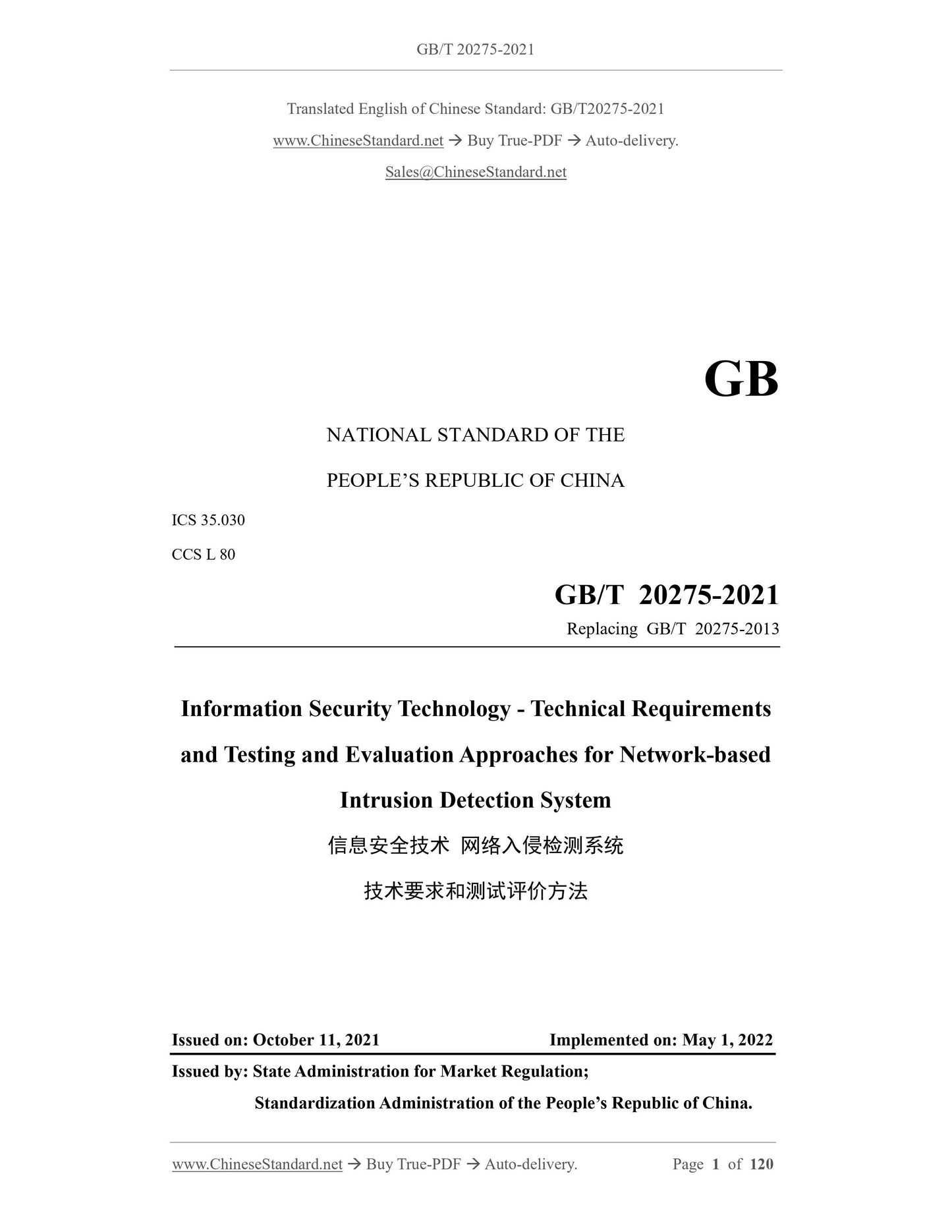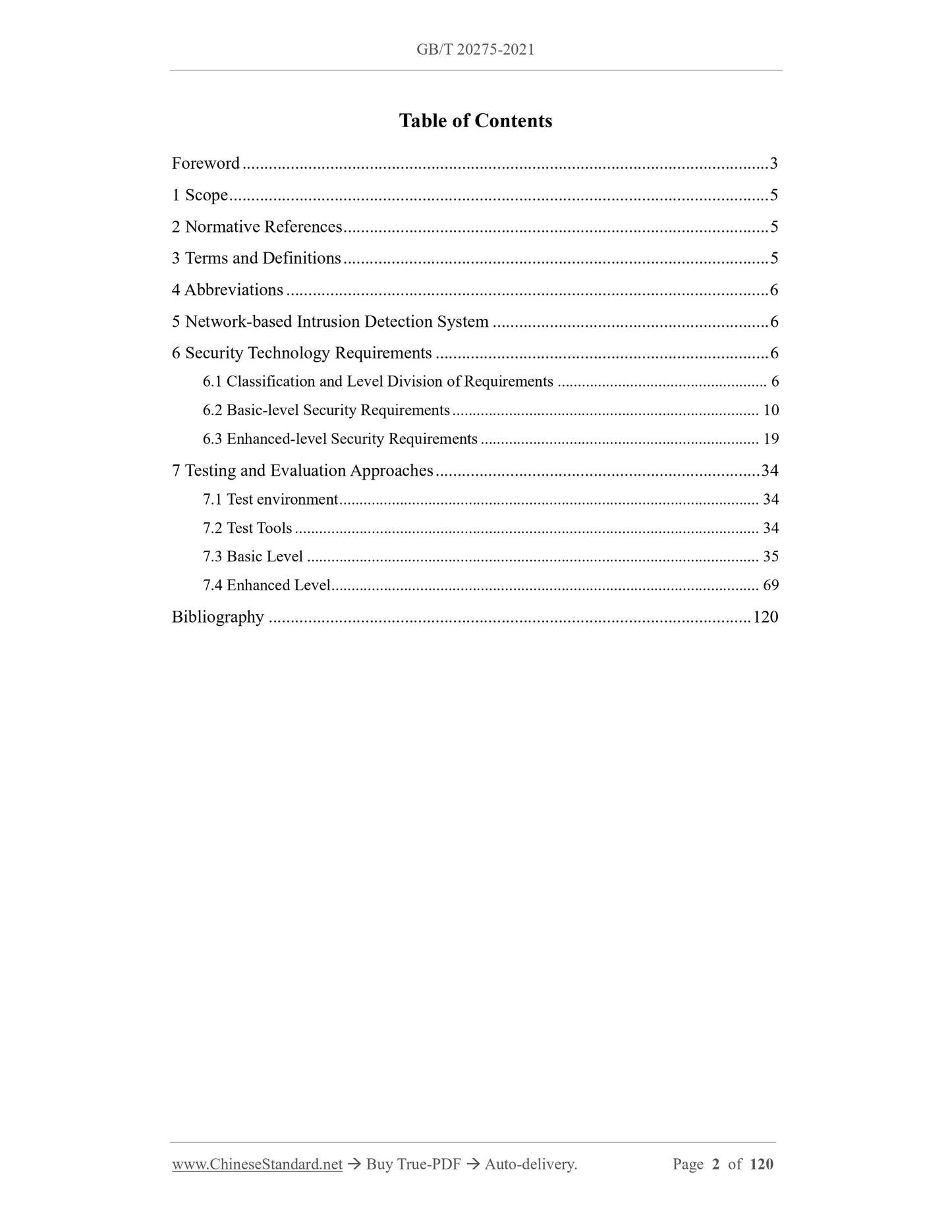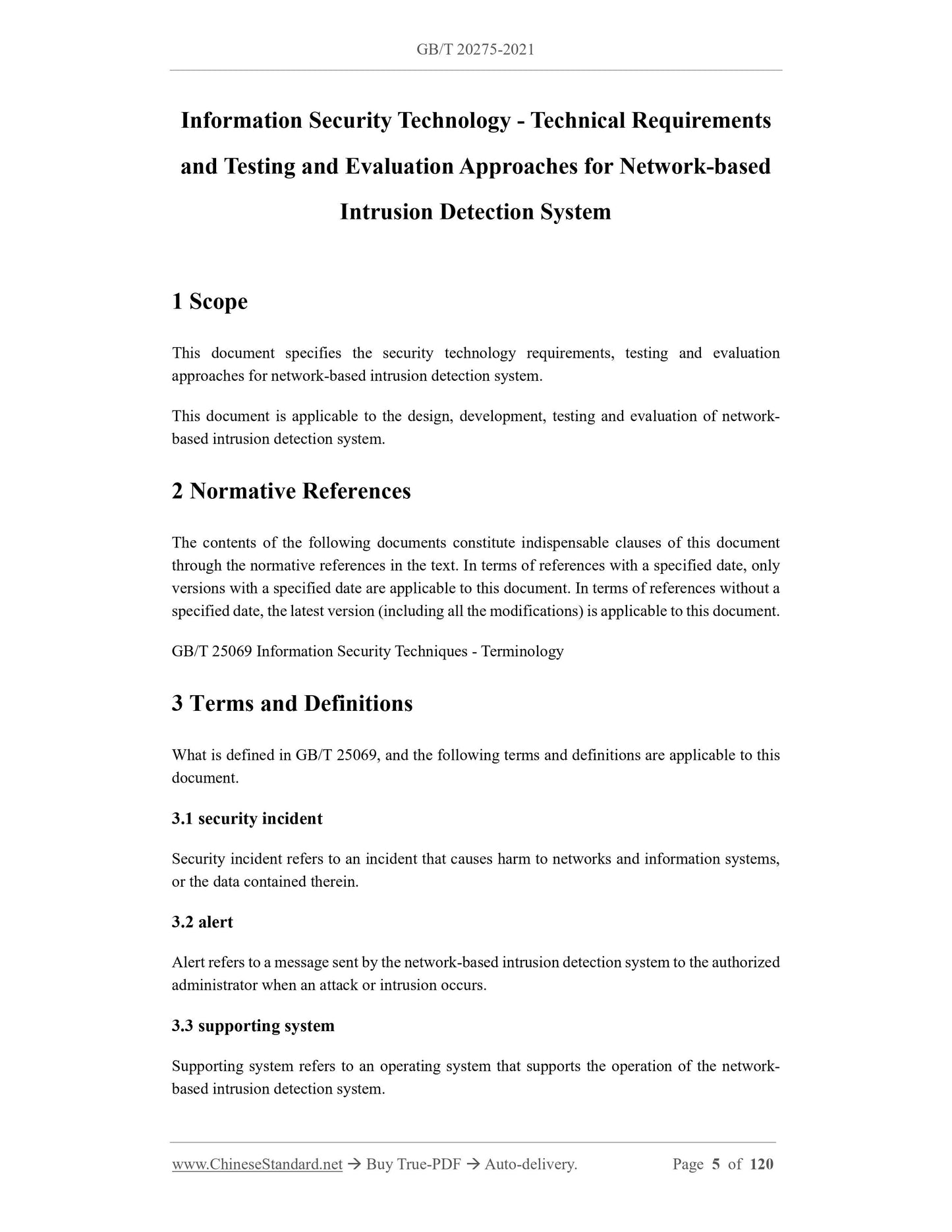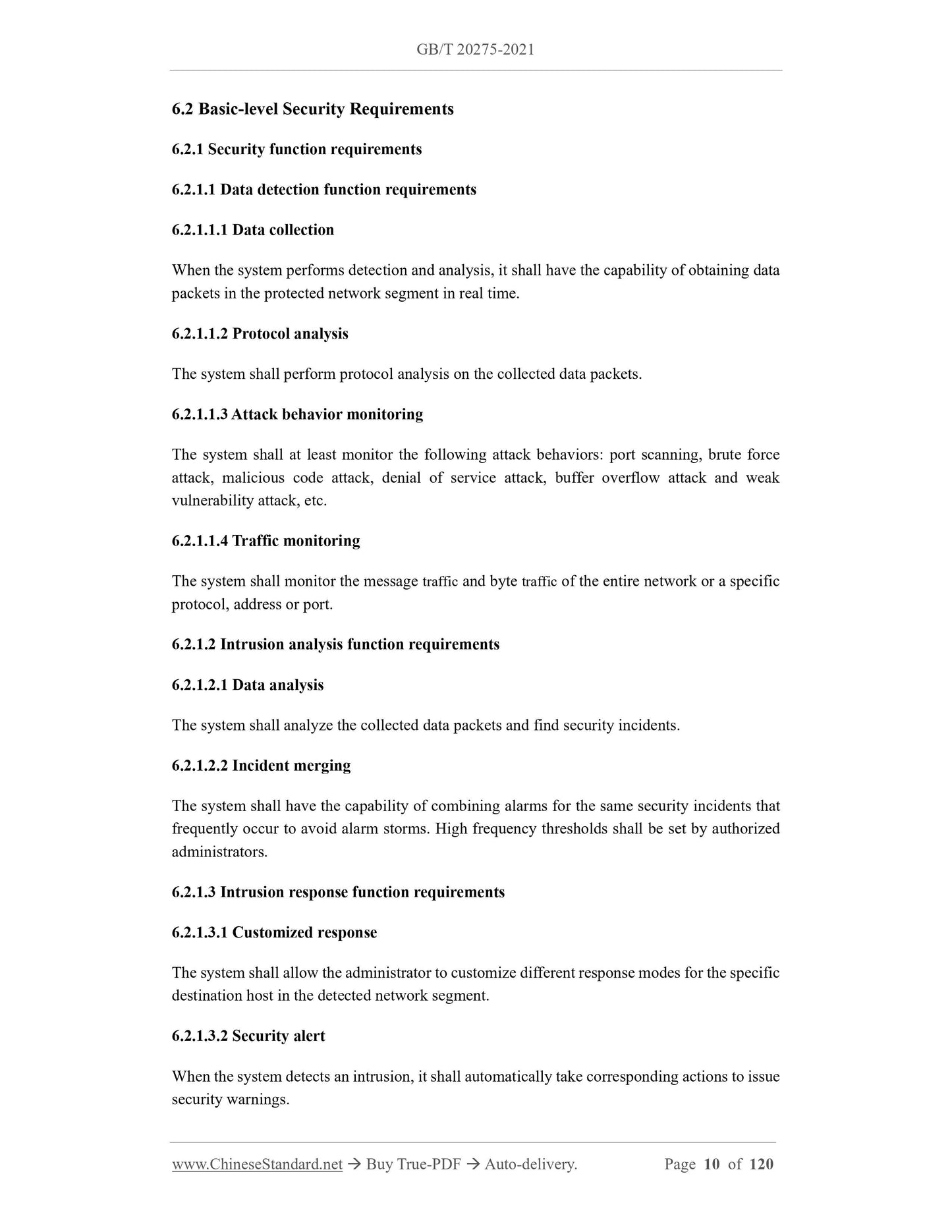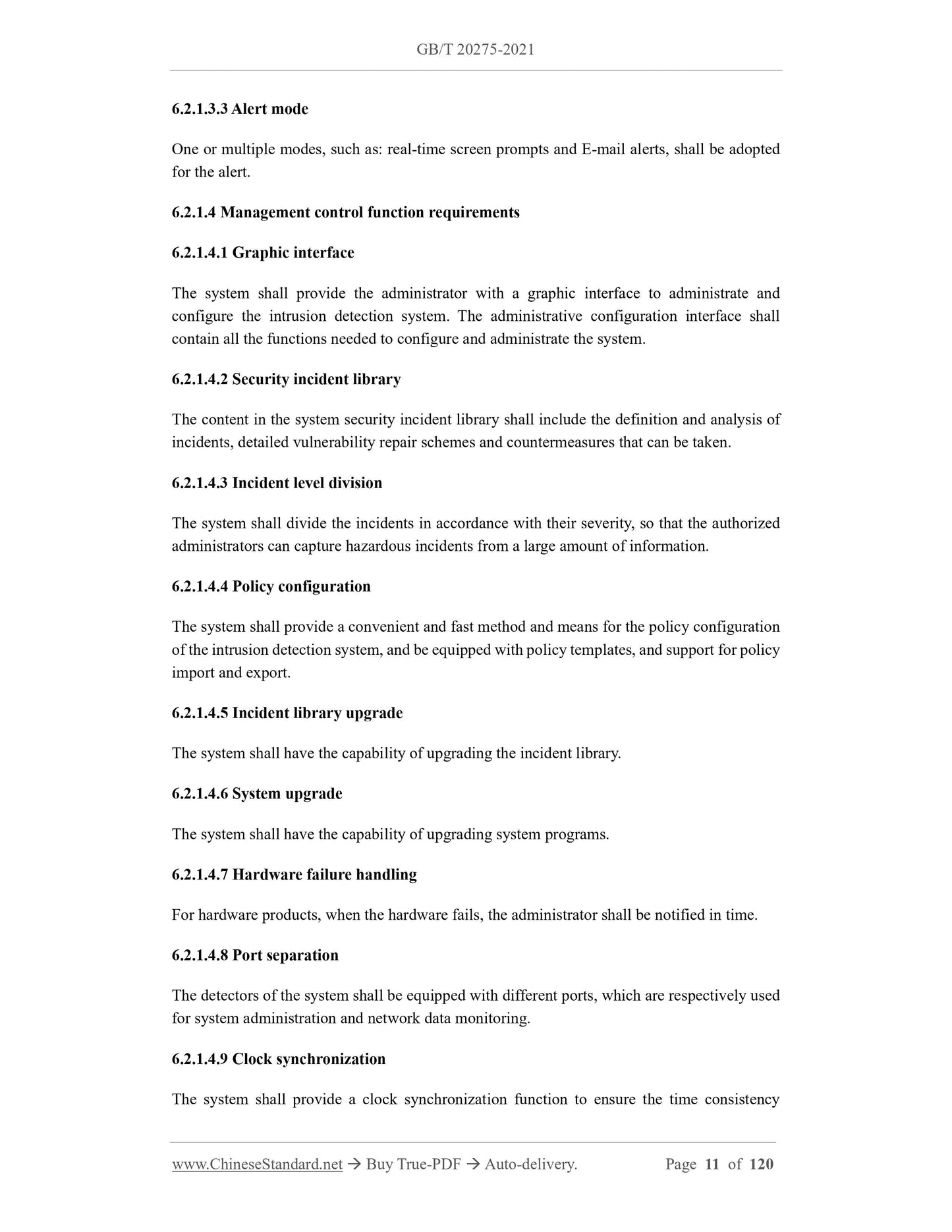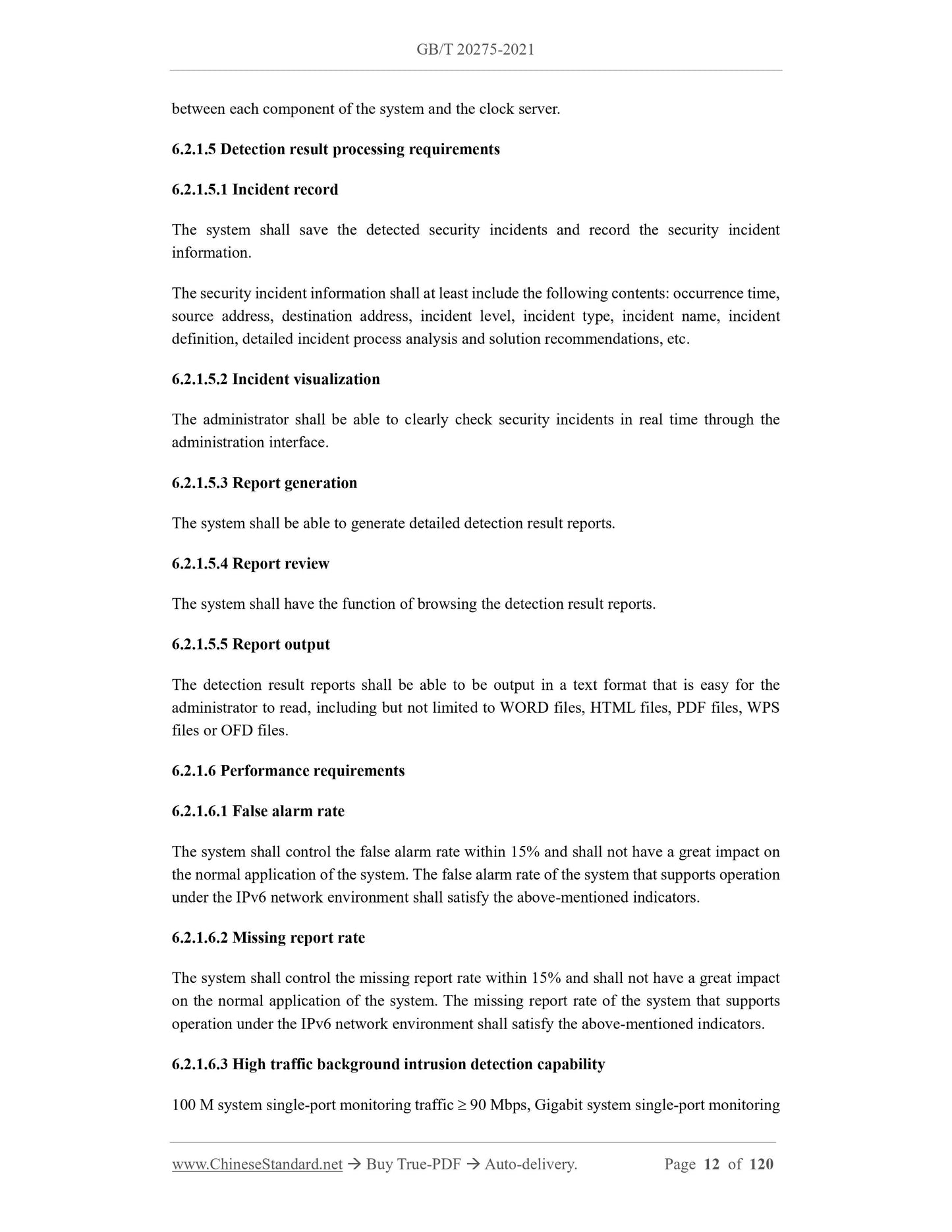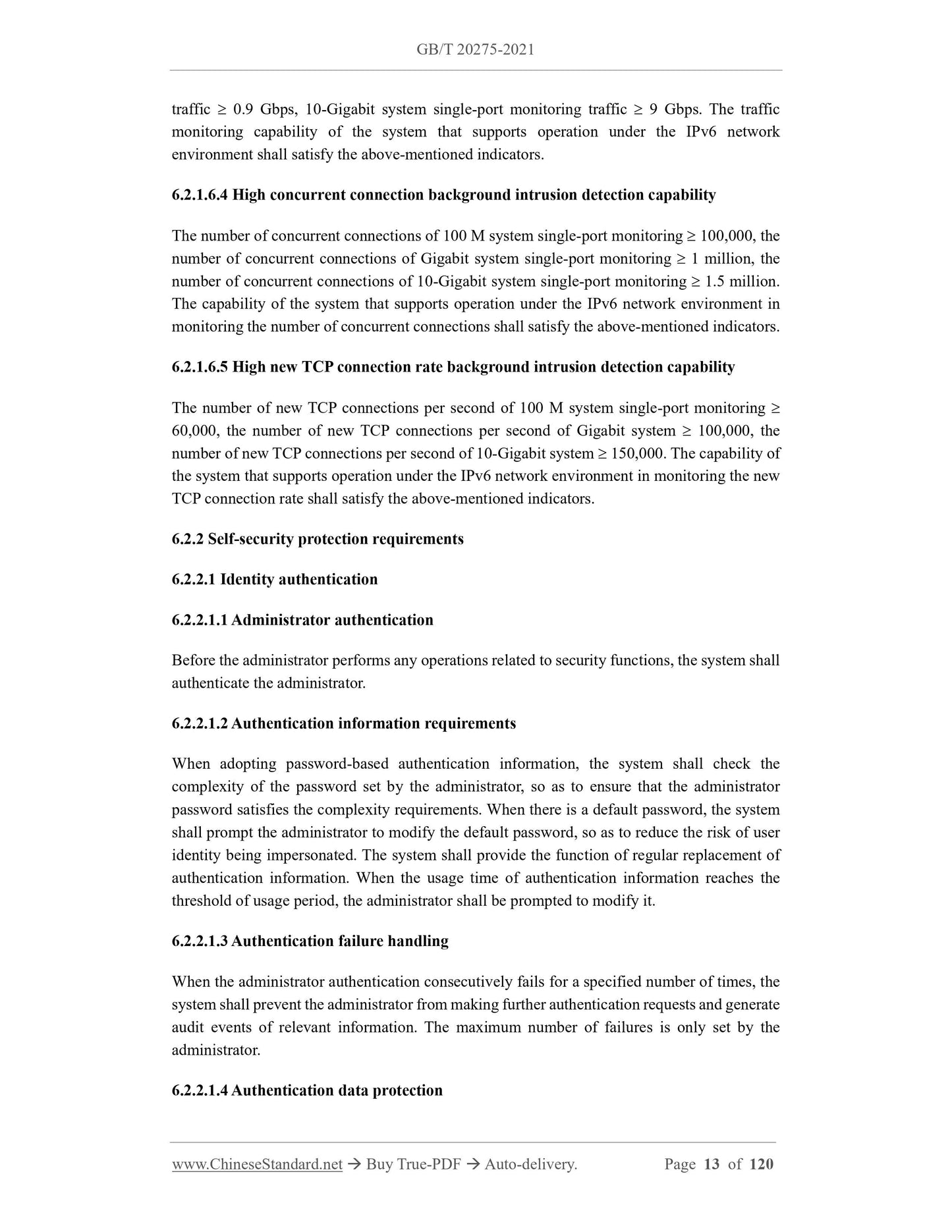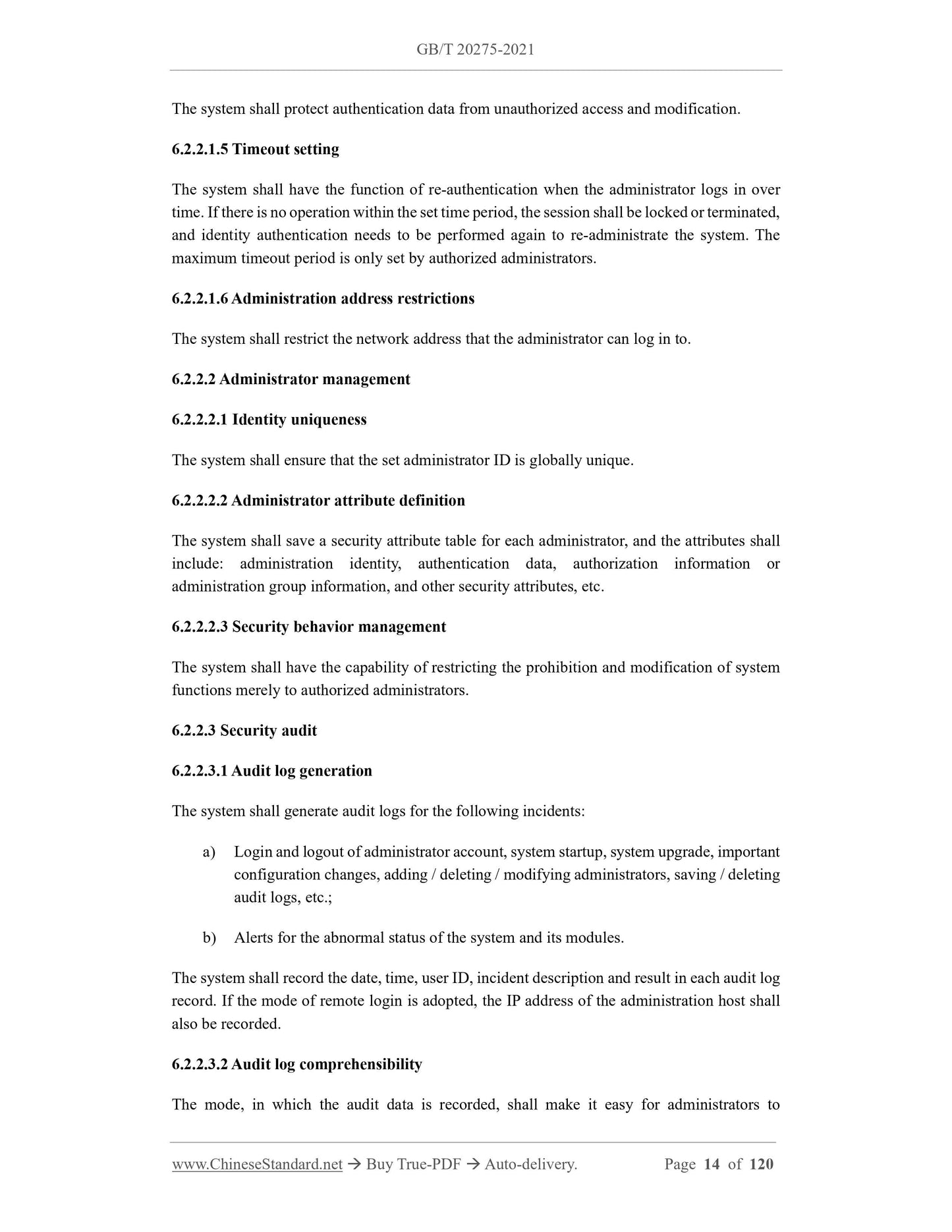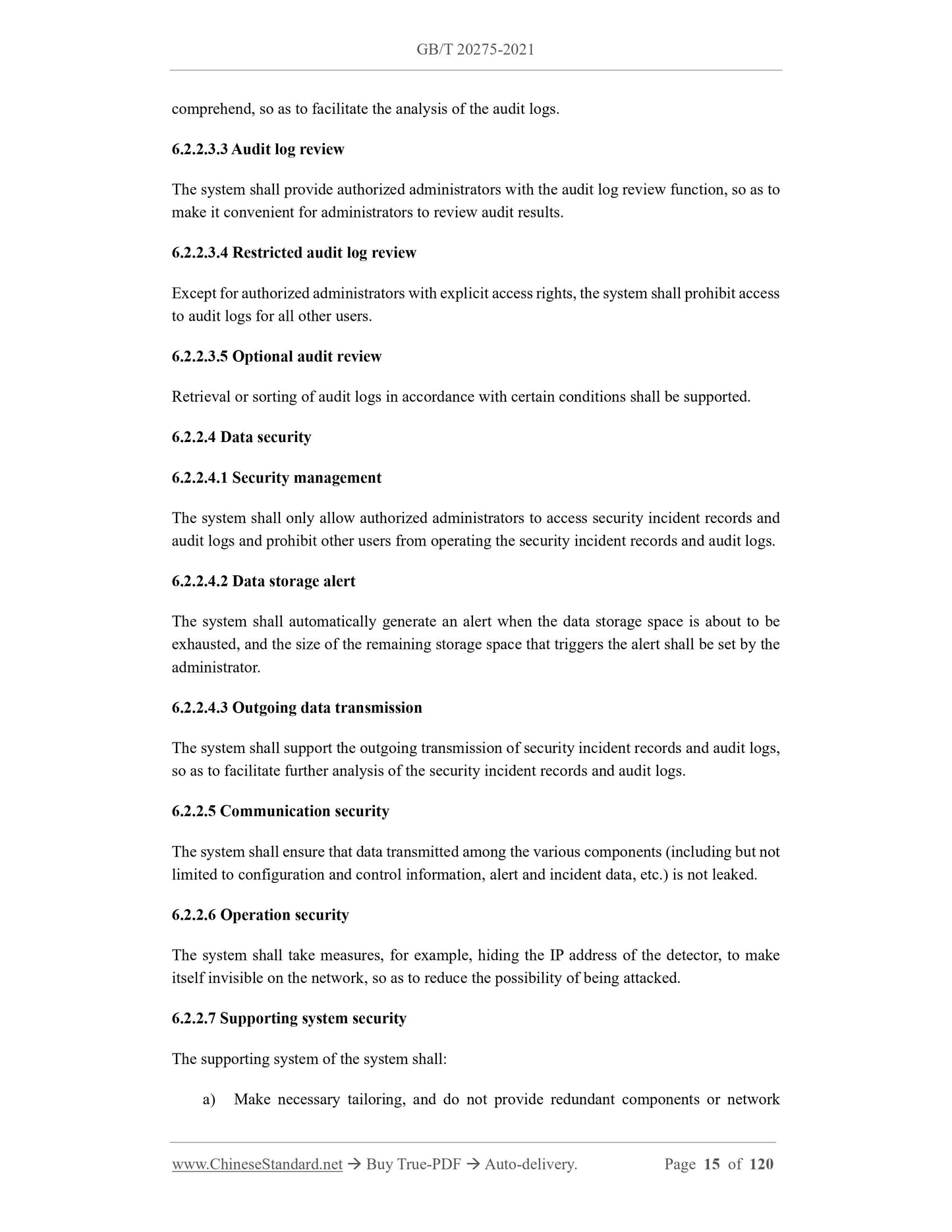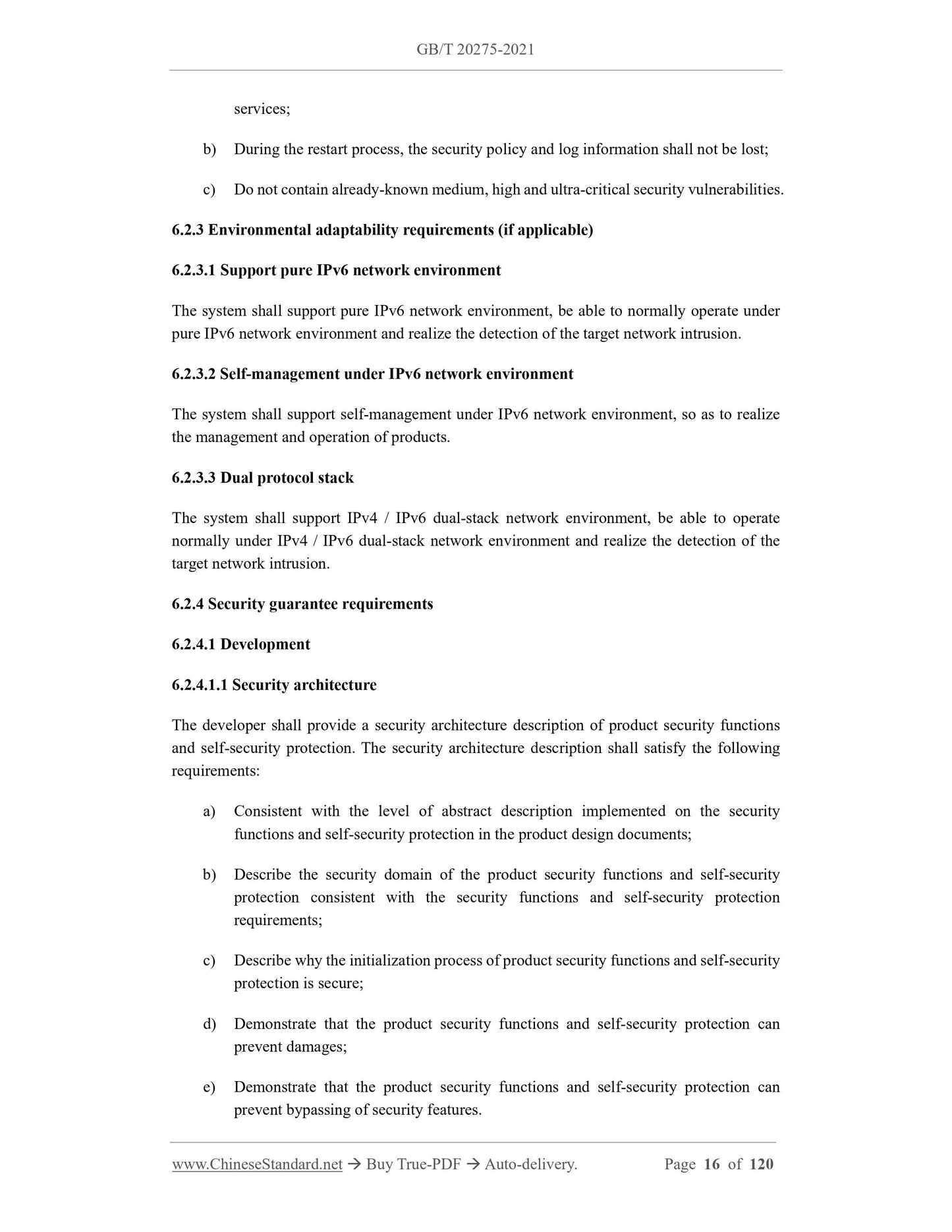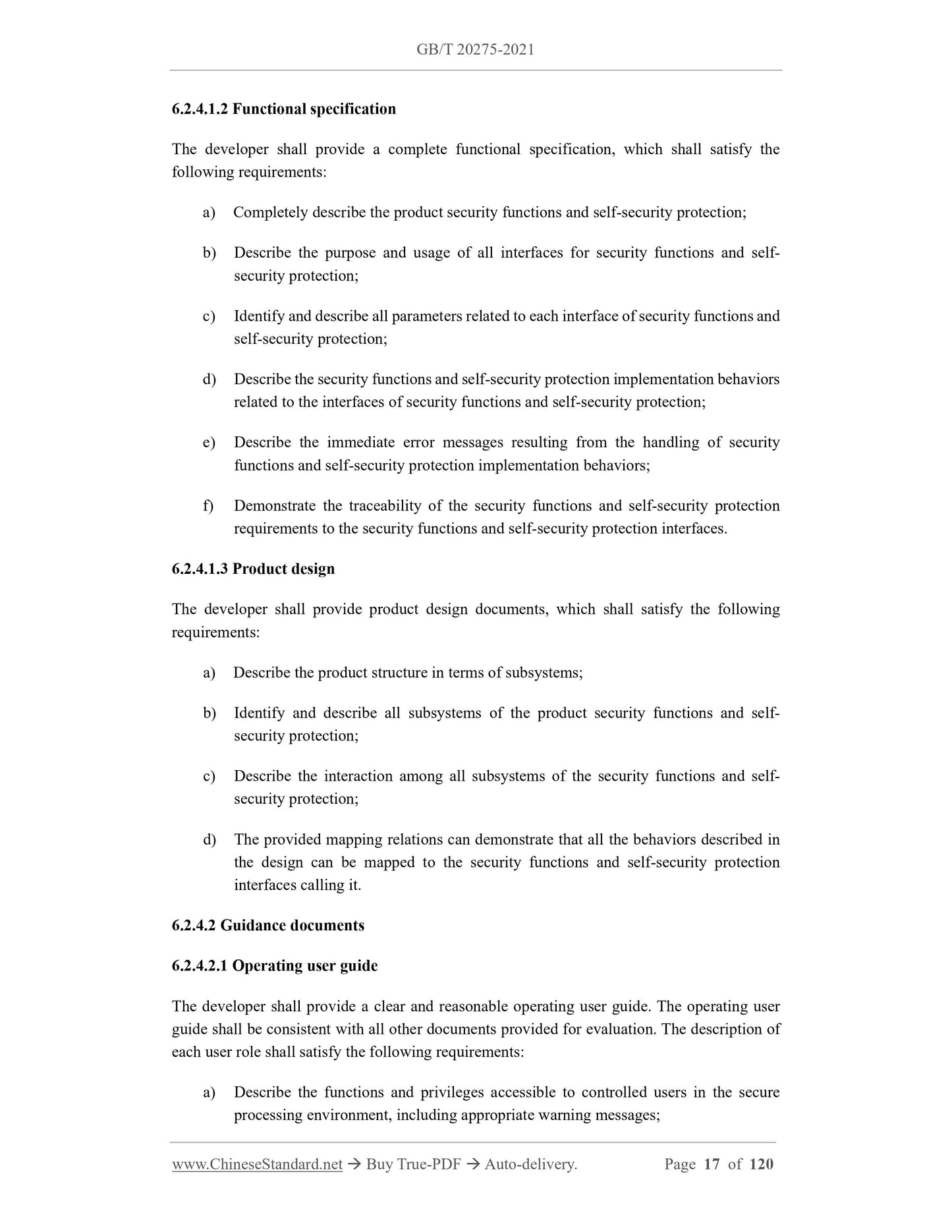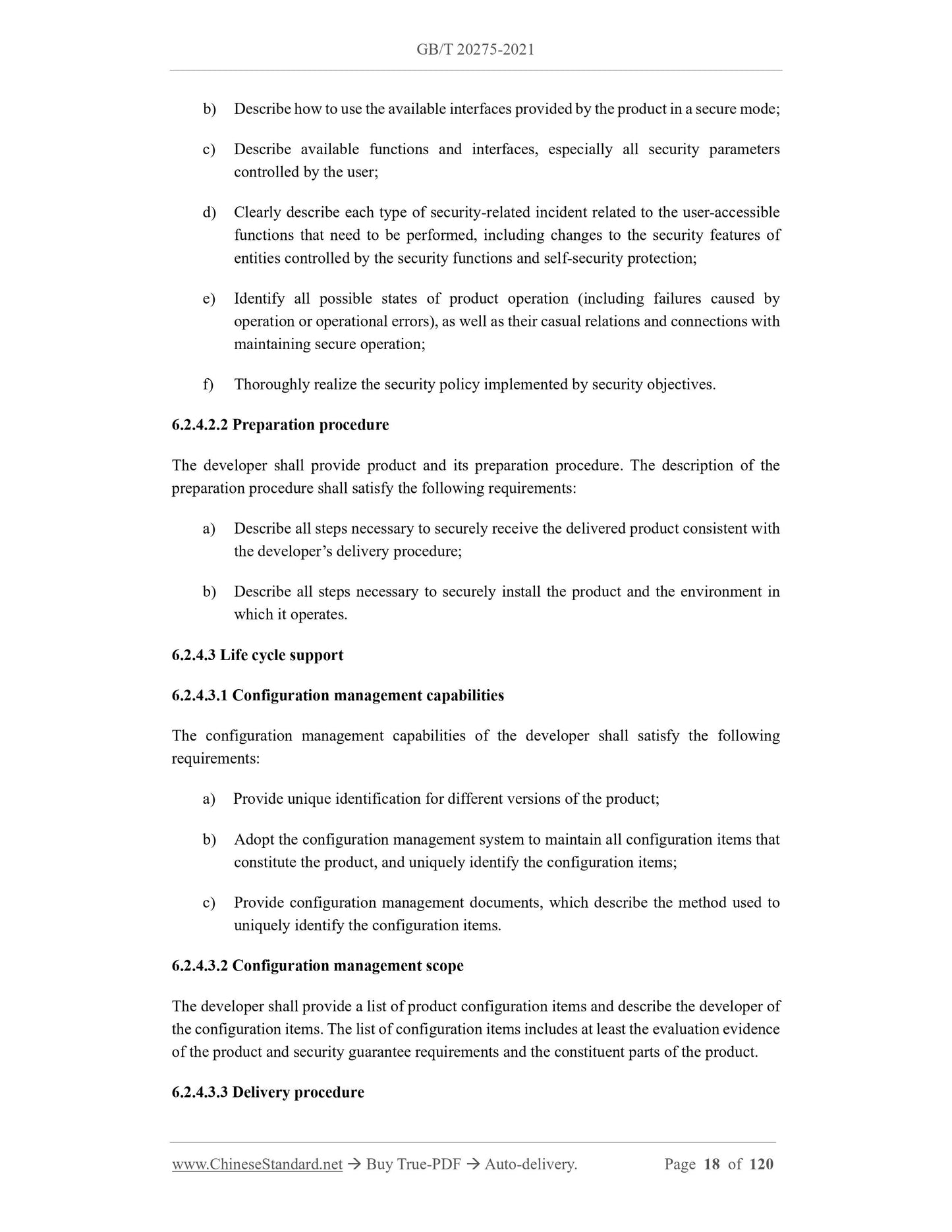1
/
of
12
www.ChineseStandard.us -- Field Test Asia Pte. Ltd.
GB/T 20275-2021 English PDF (GB/T20275-2021)
GB/T 20275-2021 English PDF (GB/T20275-2021)
Regular price
$1,205.00
Regular price
Sale price
$1,205.00
Unit price
/
per
Shipping calculated at checkout.
Couldn't load pickup availability
GB/T 20275-2021: Information security technology - Technical requirements and testing and evaluation approaches for network-based intrusion detection system
Delivery: 9 seconds. Download (and Email) true-PDF + Invoice.Get Quotation: Click GB/T 20275-2021 (Self-service in 1-minute)
Newer / historical versions: GB/T 20275-2021
Preview True-PDF
Scope
This document specifies the security technology requirements, testing and evaluationapproaches for network-based intrusion detection system.
This document is applicable to the design, development, testing and evaluation of network-
based intrusion detection system.
Basic Data
| Standard ID | GB/T 20275-2021 (GB/T20275-2021) |
| Description (Translated English) | Information security technology - Technical requirements and testing and evaluation approaches for network-based intrusion detection system |
| Sector / Industry | National Standard (Recommended) |
| Classification of Chinese Standard | L80 |
| Word Count Estimation | 74,737 |
| Issuing agency(ies) | State Administration for Market Regulation, China National Standardization Administration |
Share
